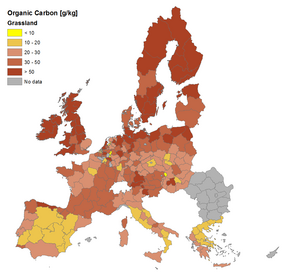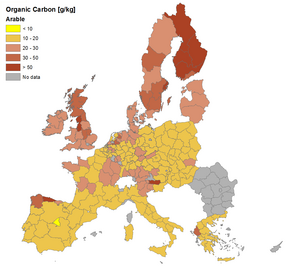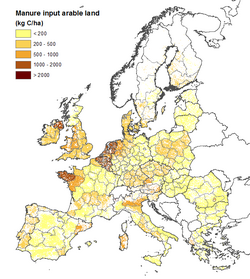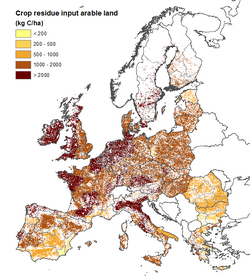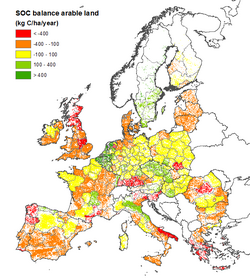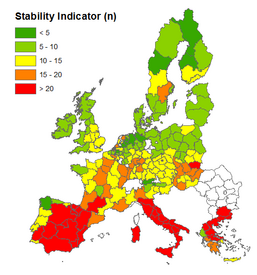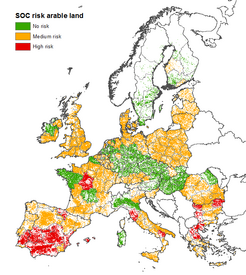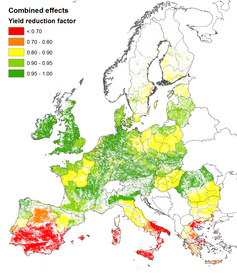Soil Organic Carbon risk maps
Main objectives in WP2 - Current and future crop and soil management systems in Europe were:
- Identify key management practices affecting SOC flows and stocks and their applicability in various farming systems and agro-ecological zones in Europe.
- Define typical farming systems in Europe (geographical zones, management practices, residue management) and their effects on SOC flows and stocks.
- Develop scenarios of future crop and soil management systems in Europe for improved productivity and enhanced soil SOC sequestration.
- Identify farm and management systems at risk of low SOC flow and stocks under current and future climate.
- Evaluate scenarios of changed soil and crop management systems for a range of ecosystem services using the model tools under current and future climate in Europe.
The GIS maps below are selected GIS maps from the reports:
- Typical farming systems and trends in crop and soil management in Europe. SmartSOIL Report. Deliverable 2.2
- Report on critical low soil organic matter contents, which jeopardise good functioning of farming systems. Deliverable 2.4

